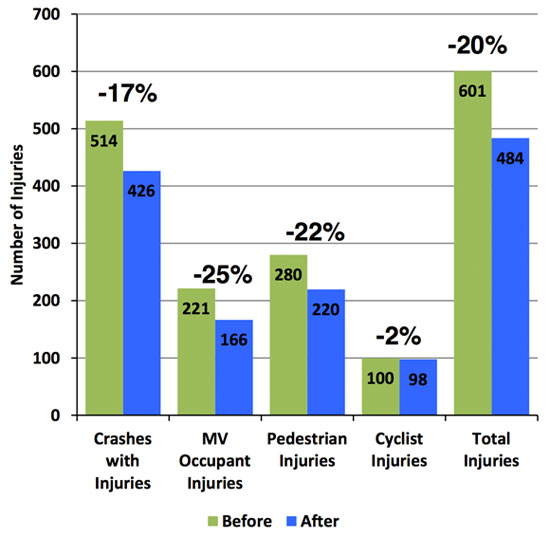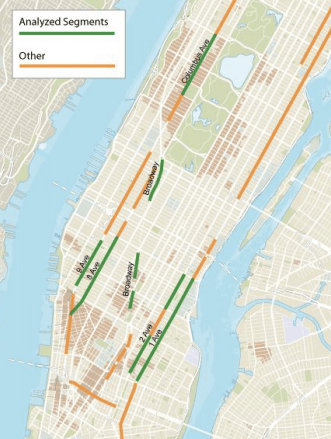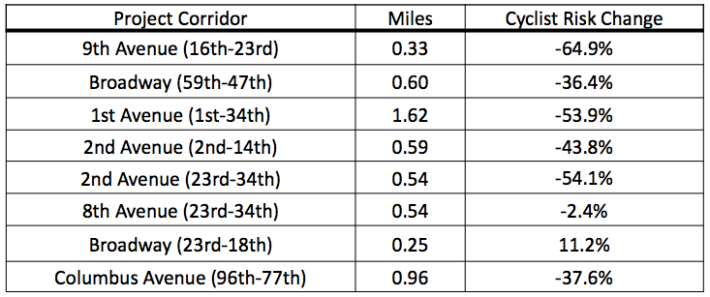
In sync with Bicycling Magazine naming New York America's best biking city, DOT released a report this week full of stats on the safety impact of protected bike lanes. It's the most robust data the city has released about this type of street design, and the results prove that protected bike lanes make streets safer not just for cyclists, but pedestrians and drivers as well.

For this analysis [PDF], DOT looked at protected bike lanes in Manhattan with at least three years of post-implementation crash data: segments of Broadway and First, Second, Eighth, Ninth, and Columbus Avenues. These streets saw big growth in cycling and major improvements in cyclist safety. The safety benefits extended to all road users, with total traffic injuries dropping 20 percent and pedestrian injuries down 22 percent.
The biggest improvement on these streets is in the diminished likelihood that a cyclist will suffer an injury -- a metric DOT calls "cyclist risk." Because injuries tended to fall or hold steady while cycling increased, most of the streets saw cyclist risk drop by more than a third. On Broadway from 59th Street to 47th Street, for example, bike volumes jumped 108 percent while crashes with injuries fell 18 percent.
The best results were on Ninth Avenue between 23rd and 16th Streets, where cyclists were 65 percent less likely to be hurt after the protected bike lane was installed. Only one of eight segments, Broadway between 23rd and 18th Streets, saw an increase in cyclist risk.

The report also included information DOT had previously released showing that taxi speeds south of 59th Street have remained steady since 2007, when the protected bike lanes began to be installed. Travel times for drivers on many of the streets with protected bike lanes have actually dropped as the volume of cars has remained steady, and retail sales on streets with protected bike lanes has grown faster than on comparable streets without bike lanes. DOT also noted that protected bike lane projects in Manhattan have shortened crossing distances for pedestrians thanks to planted concrete islands (where the city has added 110 trees).
Today, there are 30 miles of protected bike lanes across the city. Transportation Commissioner Polly Trottenberg said at the Bicycling Magazine event that DOT will install an additional five miles annually. “The results confirm the safety benefits of protected bicycle lanes, and that’s why DOT has committed to adding five more miles a year," she said. "And those bike lanes will be all over the city, not just in the core of Manhattan."





